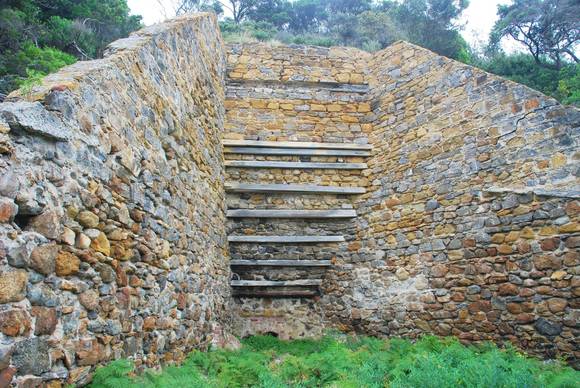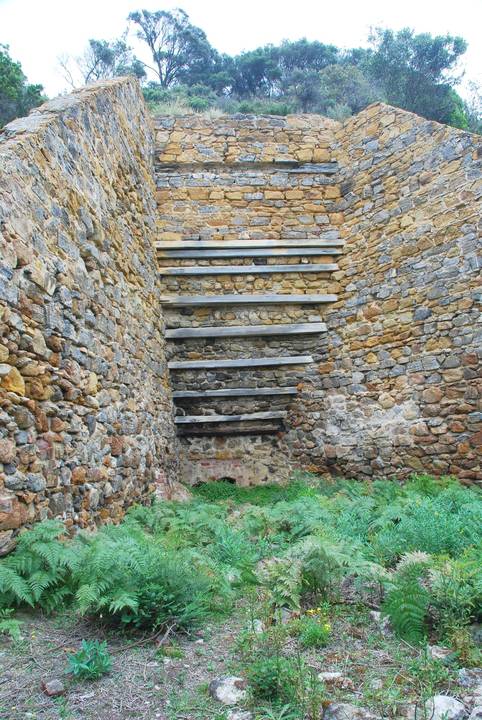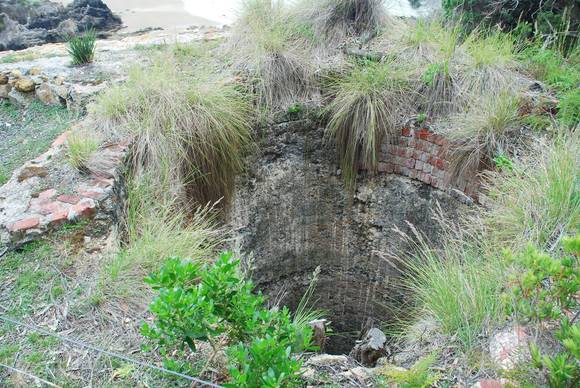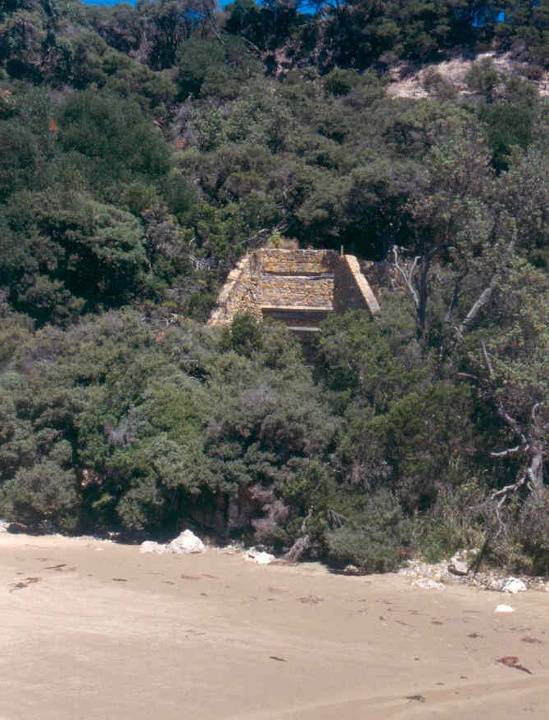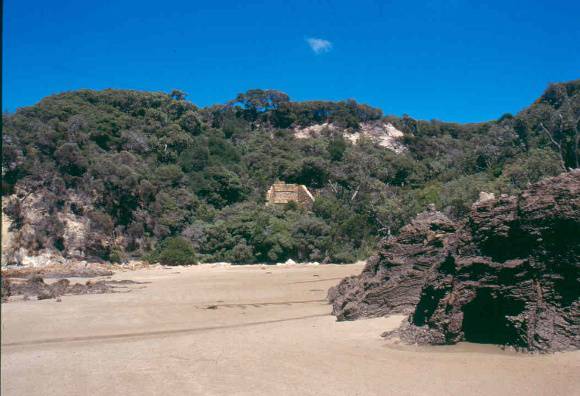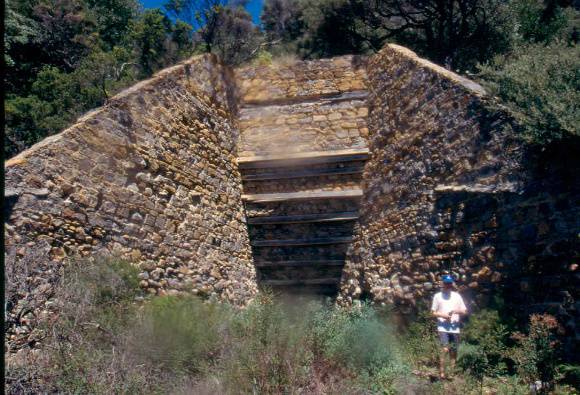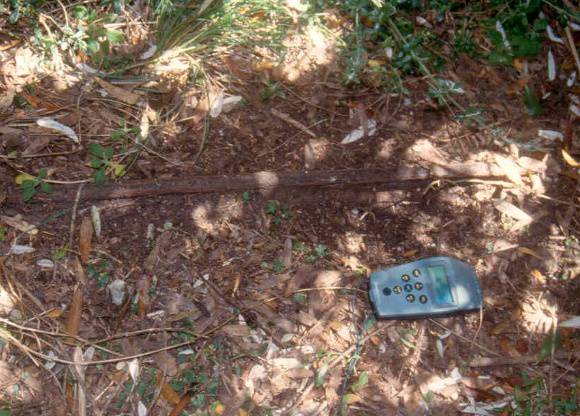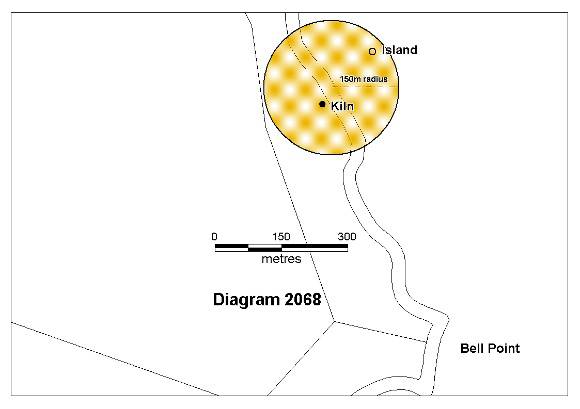| Back to search results » | Back to search page » |
|
BELL POINT LIME KILN
LocationWALKERVILLE SOUTH ROAD TARWIN LOWER, SOUTH GIPPSLAND SHIRE
File NumberPL-HE/03/0190LevelRegistered |
|
Statement of Significance
What is significant? The lime kiln, jetty, tramway, quarry and related archaeological features (remnant structures and relics) located at Bell Point, near Digger Island (tidal island 100 metres away from the mainland) are approximately 1.5 km south of the Walkerville lime kilns situated at Waratah Bay and 180 km south east of Melbourne. As the lime that was produced at Walkerville (H 2043) was in great demand a kiln was constructed to the south at Bell Point around the 1880s. A landmark possibly named after the captain of the SS Waratah William Bell. The Bell Point kiln was constructed and operated in the same manner as those at Walkerville and was worked by five or six men, some of whom lived with their families in a cluster of small cottages near the base of the kiln. Whilst the bagging shed, cottages and smithy have long since disappeared, parts of the chimneys and other remains of these activities can still be found in the undergrowth. Sometime prior to 1912, the Bell Point and Waratah Lime Company was formed by John Cain, and William and James Hughes. The Hughes brothers were professional lime burners from Sorrento on the Mornington Peninsula. Albert Elleker, Charles and William Evans and Robert Robertson joined them, and all are listed as directors in trading documents dated 1912. In 1914, William Hughes, then of Ten Mile Creek, is listed as the owner and operator of the Bell Point Lime Company and employed Bill Hilton as operations manager. The Bell Point operation continued until about 1916 when the Hughes brothers both returned to farming on properties in the Ten Mile Creek owing to reduced demand for lime as a result of the war and a severe drought. In the years following the 1914-1918 war the building trade boomed in Melbourne and a move was made to reopen the Bell Point kiln, however, this never occurred.
Kiln : The single vertical (shaft) brick and stone kiln at Bell Point is in very good condition. It is set back about one metre from the top of the escarpment and surrounded by a bricked platform. The shaft is about eight metres deep, with an internal diameter of 3.5 metres. The line of the original access track runs behind the top of the shaft and a pile of limestone blocks lies on the opposite side of the track. The escarpment rises steeply immediately behind the track. The quarry is located some 500 metres south of the kiln and apparently the limestone blocks were transported inland from the quarry by bullock cart and then tipped down the slope, sliding to the top of the kiln. The two stone wing walls (which are about 11 metres long) are closer together than the kilns at Walkerville; the south wall is almost perpendicular to the shaft and the north wall runs out at an acute angle. The front facing wall is of particular interest as there is no barrel vault leading to the draw hole, instead a series of nine cut-timber beams and one iron tie-beam support shallow corbels, staggered underneath the top-facing wall. A brick-framed square-arched draw hole sits at ground level. The site also includes a number of other features, including a quarry, jetty remains, remnant tramway and habitation sites. Quarry: The lime burnt at Bell Point was quarried a short distance to the south of the kiln. A small stone structure about 400 metres south of the kiln, near the quarry, is believed to be the remains of a powder magazine. Jetty: The jetty at Bell Point was built on the north side of Digger Island. There are 29 wooden remnant in situ piles. It was only a short jetty and early plans indicate it was T-shaped at the end. The lime was loaded into lighters to be taken out to the ships anchored further out as the water was too shallow to allow vessels to moor close by. Tramway: The remains of metal tram tracks are visible running north from the kiln, towards the beach and the remains of the timber jetty. Small trolleys were used to transport the lime. Township: Brick and stone chimneys are visible in the bush west of the Bell Point kiln. These remnant structures are assoicated with the lime workers residences. How is it significant? Why is it significant? Historical - The Bell Point lime kiln represents one of the most intact examples of a corbelled single kiln structure in the State. The preservation and condition contribute to the Bell Point kilns abilityto be understood and interpreted. Although similar in structure to the lime kilns located at Walkerville the Bell Point lime kiln is characterised by a corbled vault construction. The Bell Point lime kiln, like those at Walkerville, and the lime produced are historically important as they are related to the building trade that was flourishing in Melbourne during the 1880s following the Gold Rush. The lime produced was used for mortar, whitewash, cement and plaster. Lime buring was one of the earliest industries to develop in Victoria. The settlement at Bell Point, like the mining town at Walkervile, is historically important as it was purpose built for the production of lime.
The Bell Point lime kiln and the related features are of historical, scientific (technological) and archaeological significance to the State of Victoria.
Group
Manufacturing and Processing
Category
Kiln Lime


